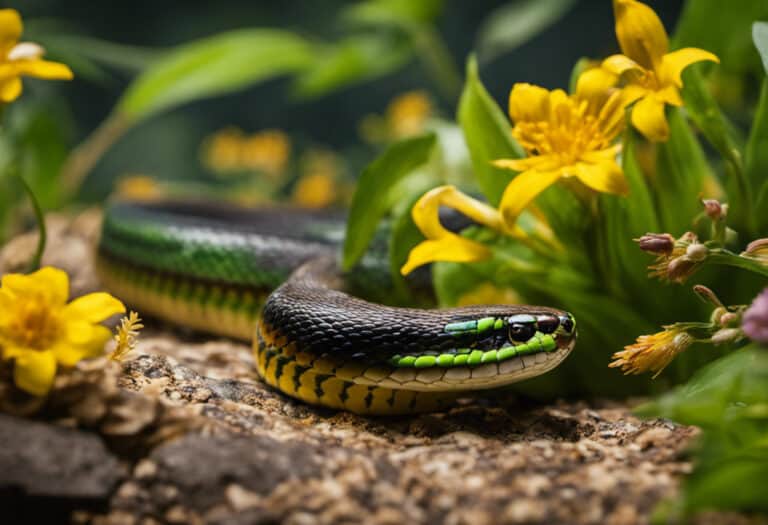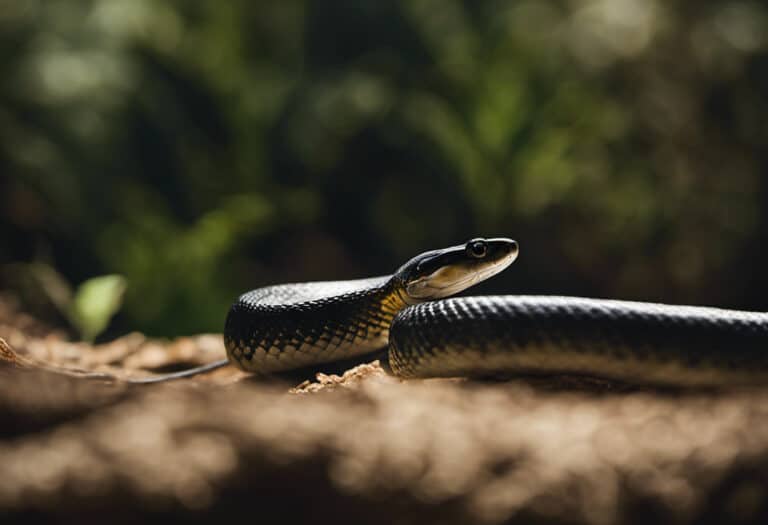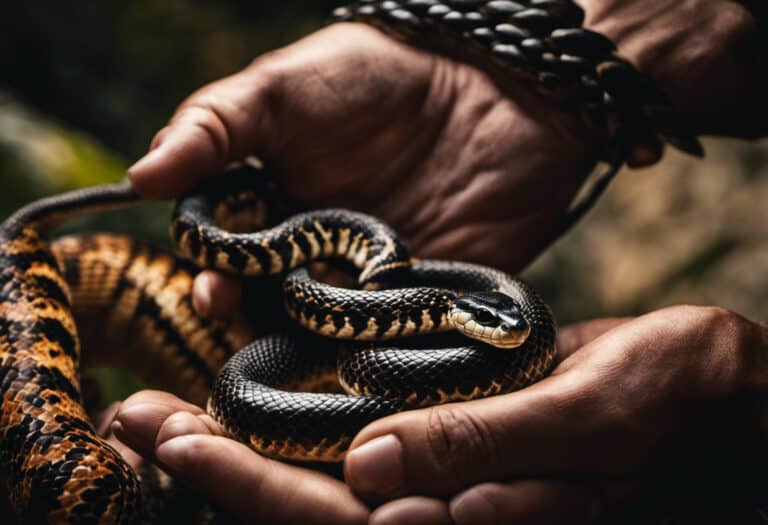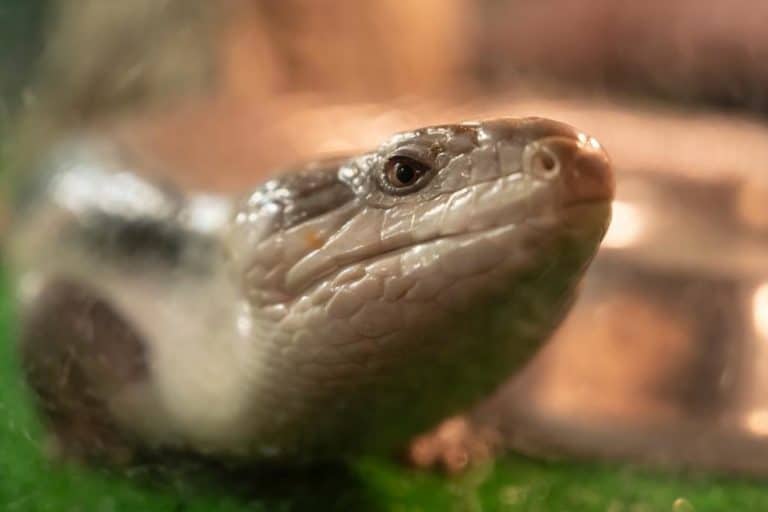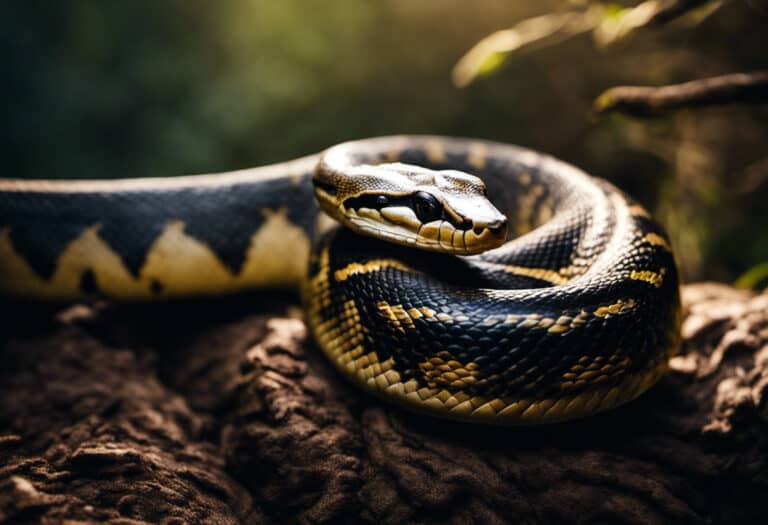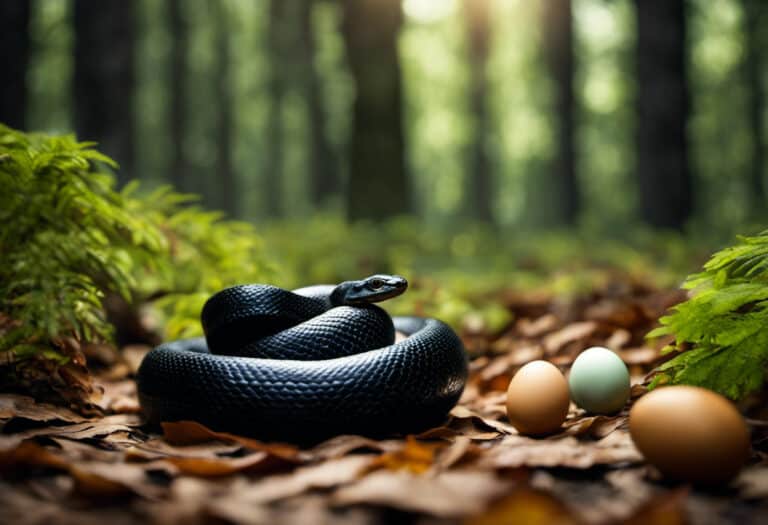Unraveling the Mystery: How Do Snakes Digest Bones?
Snakes are fascinating creatures that have the ability to consume their prey whole, including bones and fur. This raises the question of how snakes are able to digest bones, a process that most other animals cannot accomplish.
Snakes digest bones through a combination of stomach acid, digestive enzymes, and their muscular stomachs.
Unlike humans who digest their food within a few hours, snakes have a slower digestion process that takes several days, allowing enough time for the acid to fully dissolve the bones.
Key Takeaways
- Snakes have unique digestive mechanisms that allow them to digest bones, including strong stomach acid and enzymes.
- The food remains in a snake’s stomach for several days, giving the acid enough time to dissolve the bones.
- Snakes cannot digest fur or feathers due to the presence of keratin.
The Digestive Process of Snakes
The digestive process of a snake is quite different from that of humans and other animals. Snakes rely on strong stomach acid and enzymes to break down their food. Unlike other animals, snakes consume their prey whole, including bones and fur.
Once the prey is swallowed, it sits in the stomach for several days. The strong acid and enzymes break down the bones of the prey, releasing nutrients that are then absorbed by the snake’s body. Snakes have a muscular stomach and a long digestive tract that assists in the breakdown and absorption of nutrients.
Snakes have a unique feeding habit. They consume large prey which is then held for long periods in the stomach. This ensures that the acid has enough time to break down the bones and extract the nutrients. The digestion process of snakes is slow compared to humans, taking several days to weeks.
Snakes possess special digestive enzymes that aid in the digestion of bones. The enzymes break down the collagen in the bones, making them more pliable and easier to digest. In addition, the prey remains in the stomach for an extended period, allowing the acid to work on the bones more thoroughly.
The feces of snakes do not contain bones, as the acid in their stomach effectively dissolves them. However, snakes are unable to digest fur and feathers, as they are made of keratin, a substance that cannot be broken down by the snake’s digestive system.
In summary, the digestive process of snakes is unique, allowing them to consume bones and absorb nutrients effectively. Their strong stomach acid and enzymes, muscular stomach, and long digestive tract assist in the breakdown and absorption of nutrients. While bones can be digested, fur and feathers cannot. Snakes rely on their unique digestive system to survive and thrive.
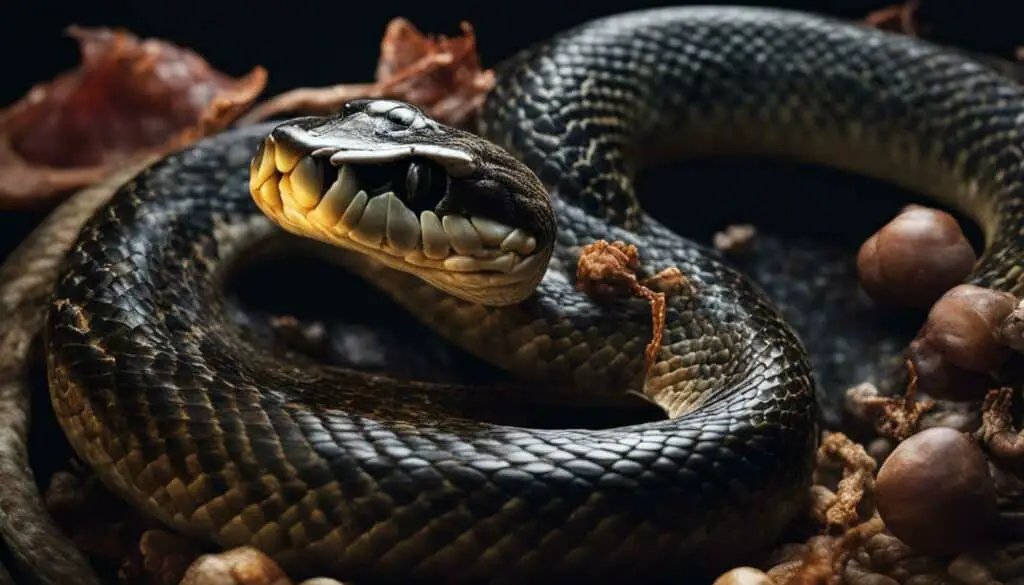
Snake Digestion: Breaking Down Bones
The ability of snakes to digest bones is due to their stomach acid and strong digestive enzymes. When a snake consumes prey, it consumes the entire animal, including the bones. The stomach acid produced by snakes is highly acidic and can dissolve bones, allowing the snake to extract necessary minerals and nutrients from its prey.
In addition to strong stomach acid, snakes also have digestive enzymes that further aid in the breakdown of proteins, fats, and carbohydrates. These enzymes help to break down the softer tissues of the prey, making it easier for the snake to consume.
Snakes also have physically strong stomachs that are able to stretch to accommodate large meals. This allows them to consume prey that is much larger than their own body size.
The digestion process for snakes is slow, with food remaining in their stomach for several days or even weeks. This extended time in the gut gives the acid enough time to break down bones into small pieces. These small pieces can then be absorbed by the snake’s digestive system.
Although snakes are able to digest bones, they are unable to digest fur or feathers. This is because fur and feathers are made from keratin, which is indigestible. Snakes can safely consume feathers and fur, but they are unable to break them down for digestion. Instead, the fur and feathers are simply passed through the snake’s digestive system and eliminated in its feces.
Overall, snake digestion is a unique and fascinating process that allows them to extract necessary nutrients from their prey. Other reptiles, such as crocodiles and lizards, have similar abilities to digest bones.
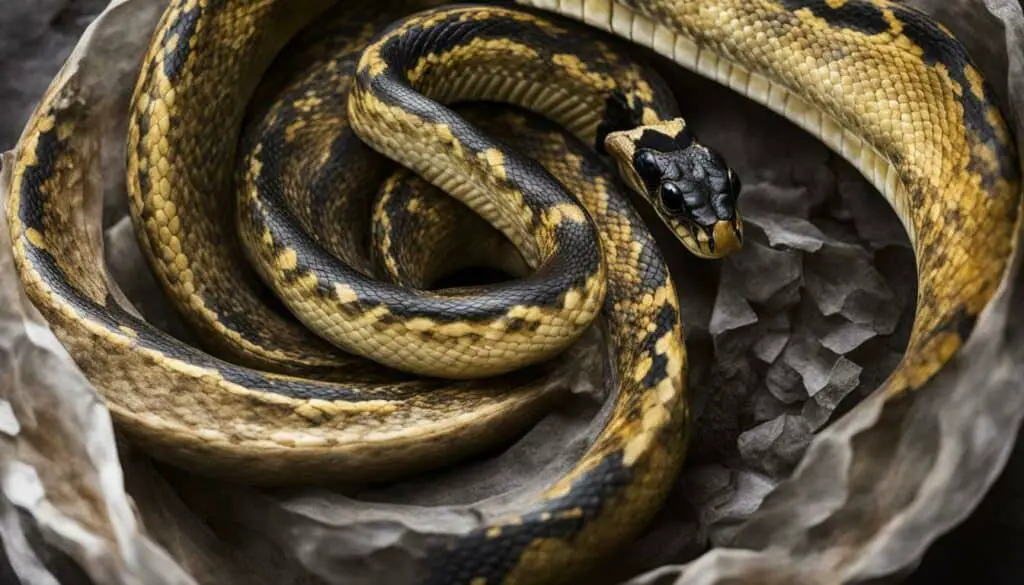
The Factors Behind Snake Bone Digestion
There are three main factors that enable snakes to digest bones: their stomach acid and enzymes, their muscular stomach, and the length of time the food remains in their gut.
Firstly, snakes have strong stomach acid and enzymes that help break down bones. The stomach acid has a pH level of 1.5, which aids in the digestion process. The digestive enzymes work to break down the bones into smaller pieces, allowing for easier absorption into the gut.
Secondly, snakes have muscular stomachs that allow them to squeeze and push the food down into their stomachs. This action helps to physically break apart the bones and aids in digestion.
Lastly, the food remains in the snake’s stomach for several days, allowing ample time for the acid to dissolve the bones. During this time, the bones are broken down into small enough pieces to be absorbed into the gut and utilized for nutrients.
It is important to note that snakes cannot digest fur or feathers. These materials are made of keratin, an indigestible substance. However, snakes can safely consume and digest bones, which provide vital nutrients like calcium.
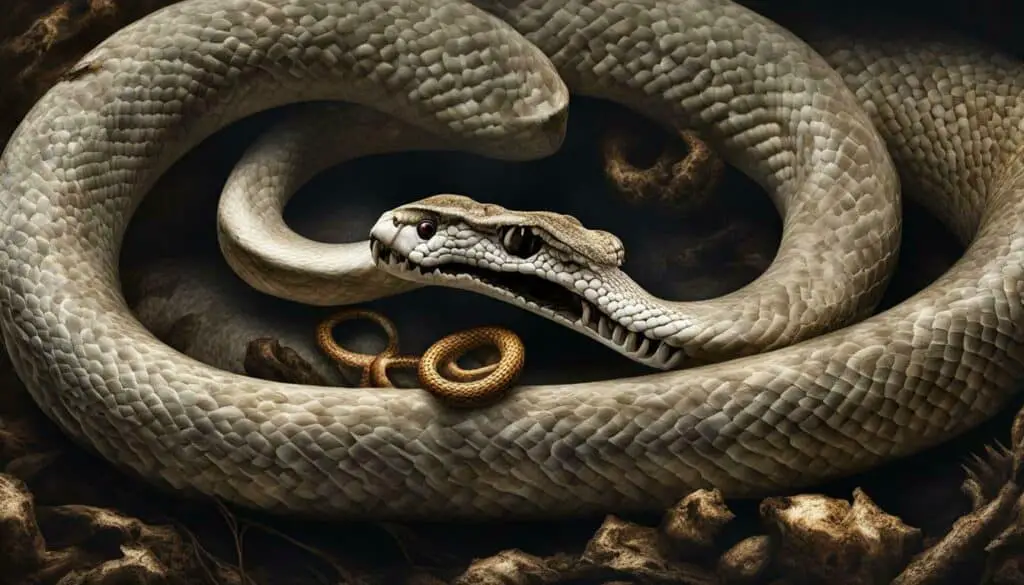
In summary, the digestion of snake bones is facilitated by the snake’s strong stomach acid and enzymes, its muscular stomach, and the length of time the food remains in the gut. These factors work together to break down the bones and extract the necessary nutrients for the snake’s survival.
The Inability to Digest Fur and Feathers
While snakes can digest bones, they are unable to digest fur or feathers. This is due to the presence of keratin, which forms filaments that create a protective barrier, preventing it from being broken down by stomach acid and enzymes. Therefore, fur and feathers do not undergo decomposition in the snake’s digestive system and are either regurgitated as a furball or pass through the system unscathed.
Snakes have strong stomach acid and enzymes that aid in the digestion of bones, but the same cannot be said for keratin. The composition of keratin is such that it is resistant to chemical degradation, hence making it impossible for snakes to digest it. Although keratin is found in hair, nails, hooves, claws, and beaks, it is primarily an issue for snakes when it comes to digesting the prey’s fur and feathers.
It’s worth noting that while snakes cannot digest fur and feathers, they can digest other parts of their prey, such as organs, muscles, and bones. This is made possible by the unique digestive system of snakes, which is different from that of mammals. Snakes can consume prey whole, and their stomach acid breaks down the bones slowly over several days. The digestion of bones is facilitated by the snake’s muscular stomach and the length of time food remains in the gut.
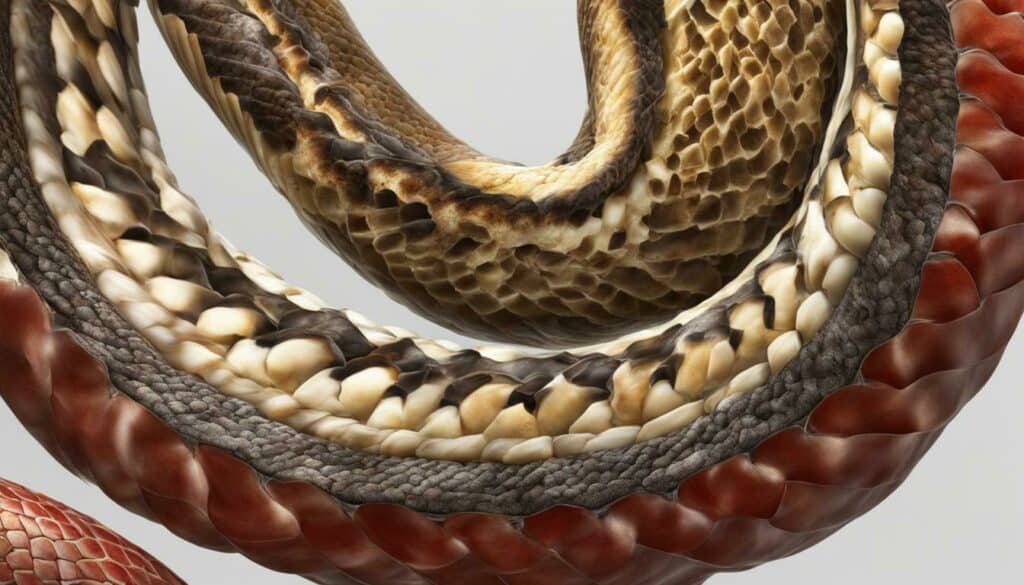
Other reptiles, such as crocodiles and lizards, can also digest bones. However, they do not have the ability to consume prey whole, like snakes, which is why their digestive process for bones is different.
In conclusion, while snakes are impressive in their ability to digest bones, the presence of keratin in fur and feathers poses a challenge to their digestive system. This is an interesting example of how the same digestive system can be highly effective for some nutrients and useless for others. Understanding this unique aspect of snake digestion can help us better appreciate and respect these fascinating creatures.
Conclusion
In conclusion, snakes can digest bones due to their strong stomach acid and enzymes, as well as the length of time the prey remains in their stomach. The combination of these factors allows for the complete breakdown and absorption of bone material over several days or weeks. However, snakes are unable to digest fur and feathers due to the presence of keratin.
It is important for snake owners to provide adequately sized prey and ensure proper environmental conditions to support digestion. Other reptiles, such as crocodiles and lizards, also have similar abilities to digest bones.
Snake feces typically do not contain bones, as the acid in their stomach completely breaks them down. Overall, snakes display remarkable digestive abilities that enable them to consume and process prey much larger than themselves.
FAQ
Q: How do snakes digest bones?
A: Snakes are able to digest bones due to their strong stomach acid and enzymes. The acidic environment in their stomach helps dissolve the bones of their prey.
Q: Can snakes digest fur and feathers?
A: No, snakes are unable to digest fur or feathers. These materials are composed of keratin, which is indigestible for snakes.
Q: What happens to the fur and feathers that snakes ingest?
A: Snakes may either pass the fur through their digestive system or regurgitate it as a furball. They are unable to break down the keratin in fur and feathers.
Q: What enables snakes to digest bones?
A: Snakes are able to digest bones due to their strong stomach acid and enzymes, physically strong stomach, and the length of time the food remains in their gut.
Q: Are there any other materials that snakes cannot digest?
A: Besides fur and feathers, snakes are generally unable to digest materials that are composed of keratin, such as nails, claws, and horns.
Q: Do snakes regurgitate bones?
A: No, snakes do not regurgitate bones. Their stomach acid and enzymes break down the bones, allowing them to be absorbed and digested.
